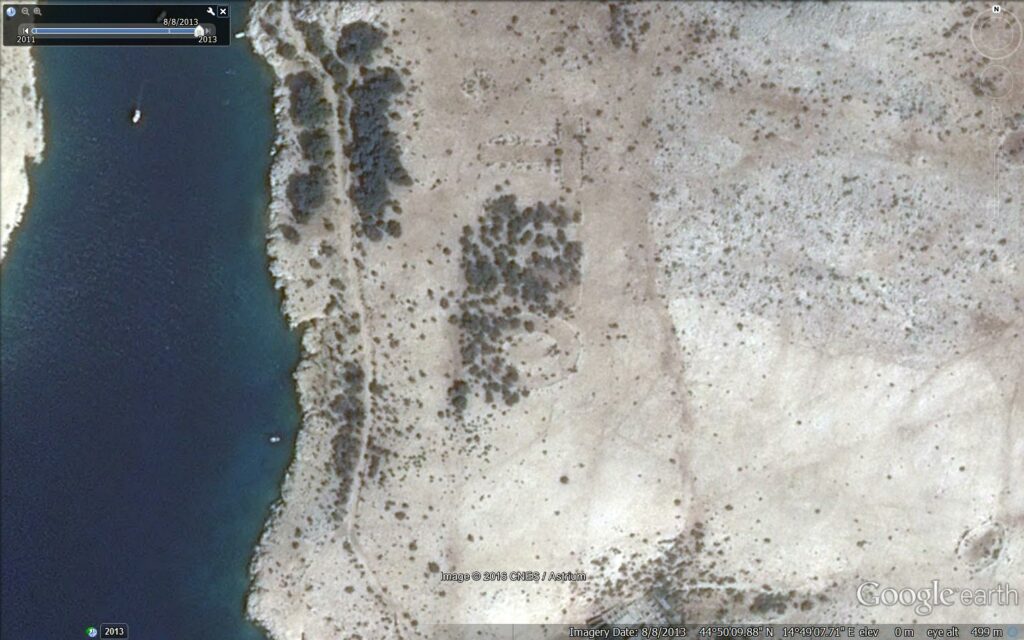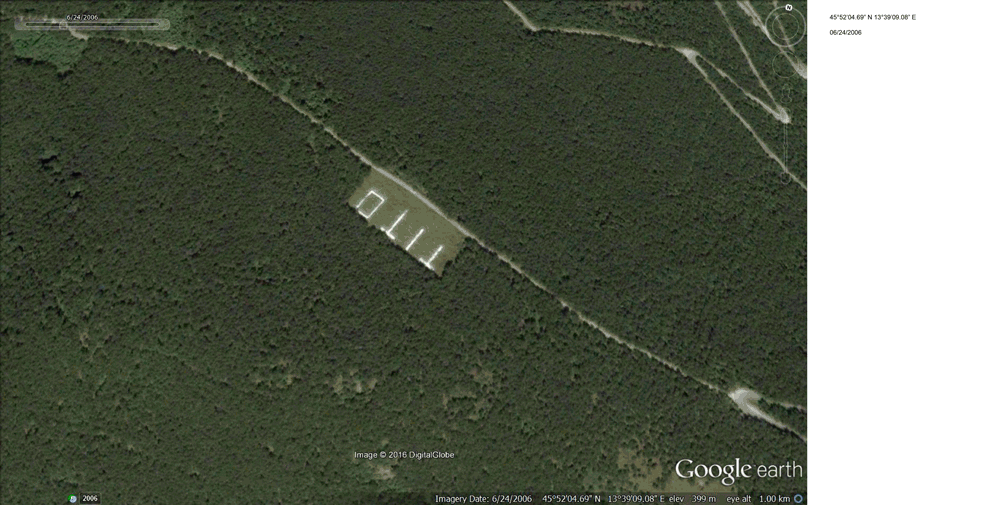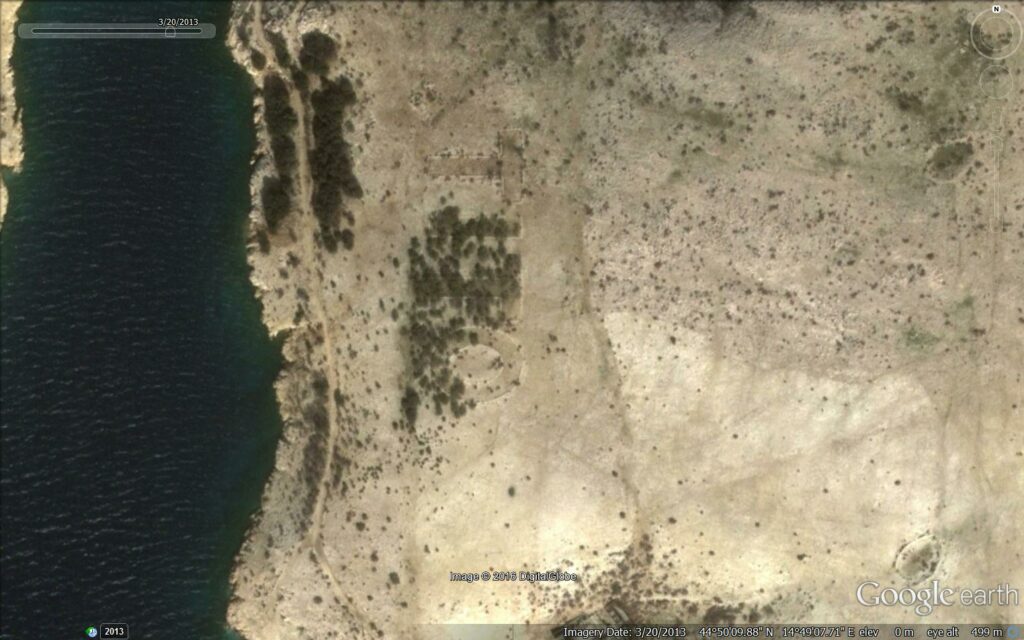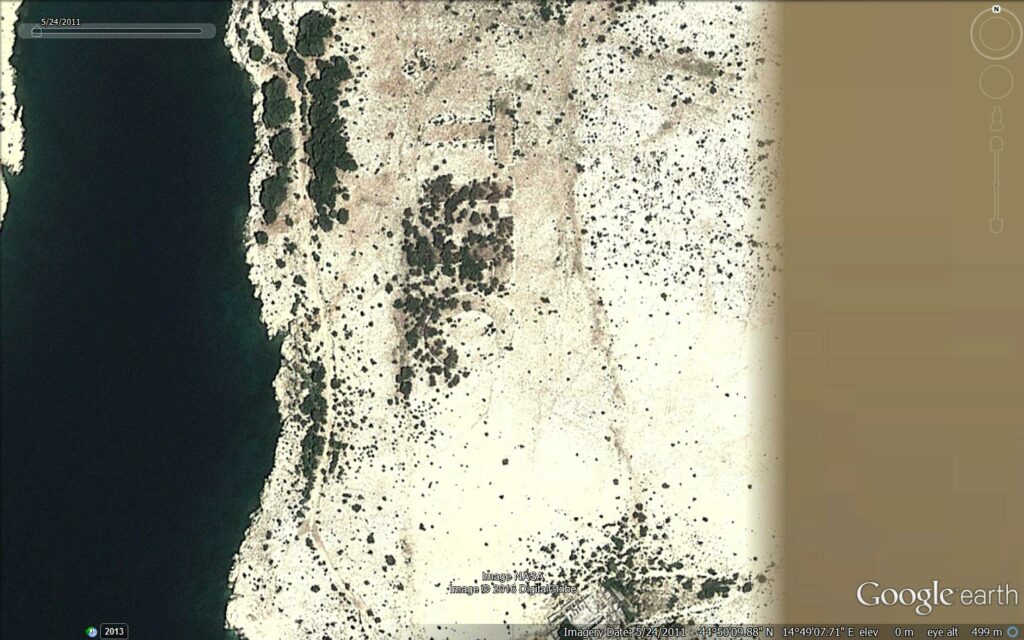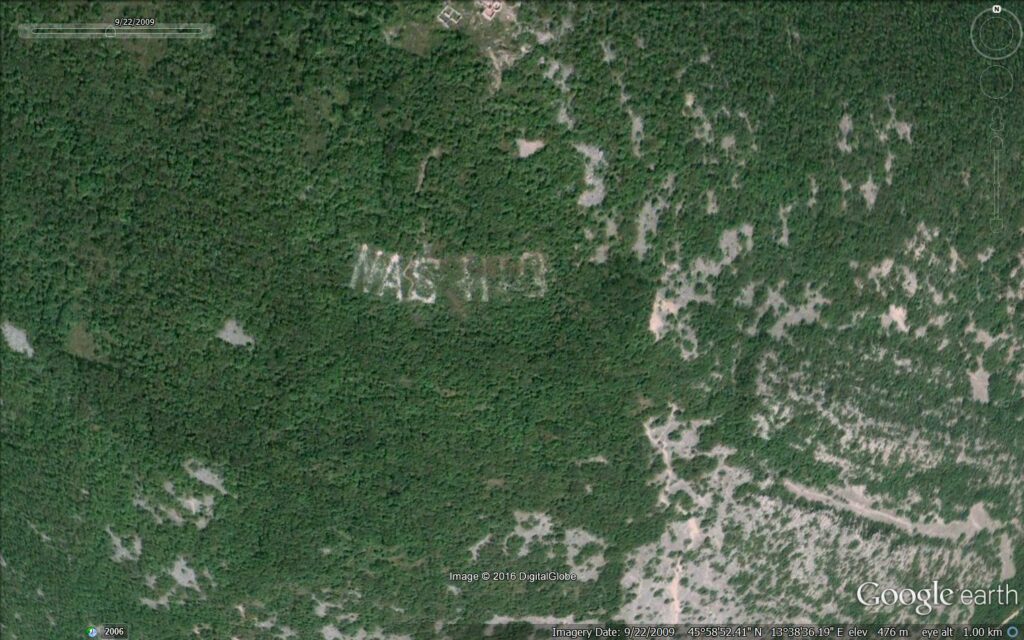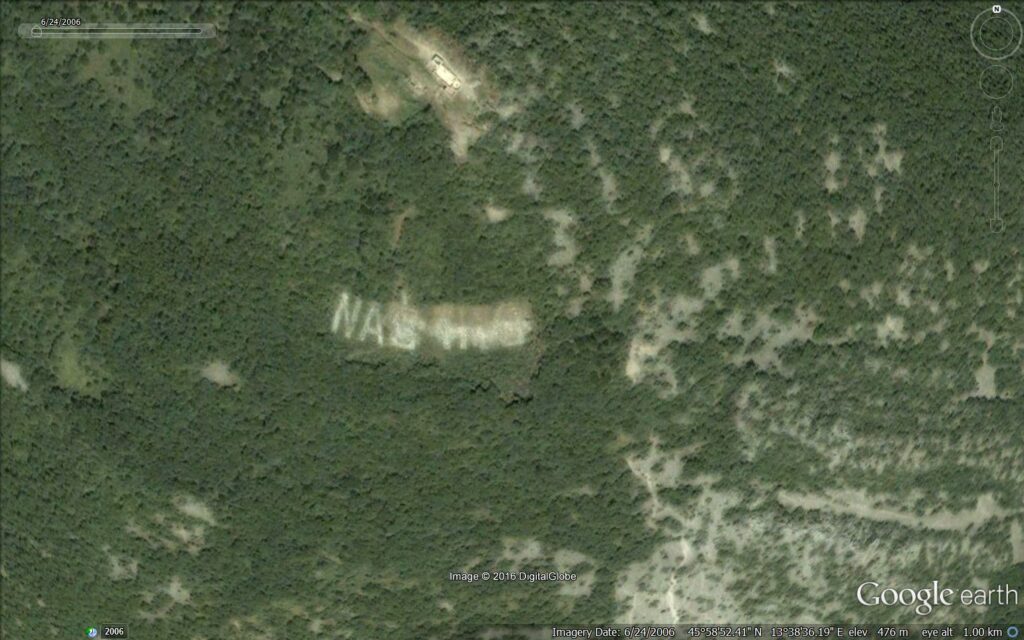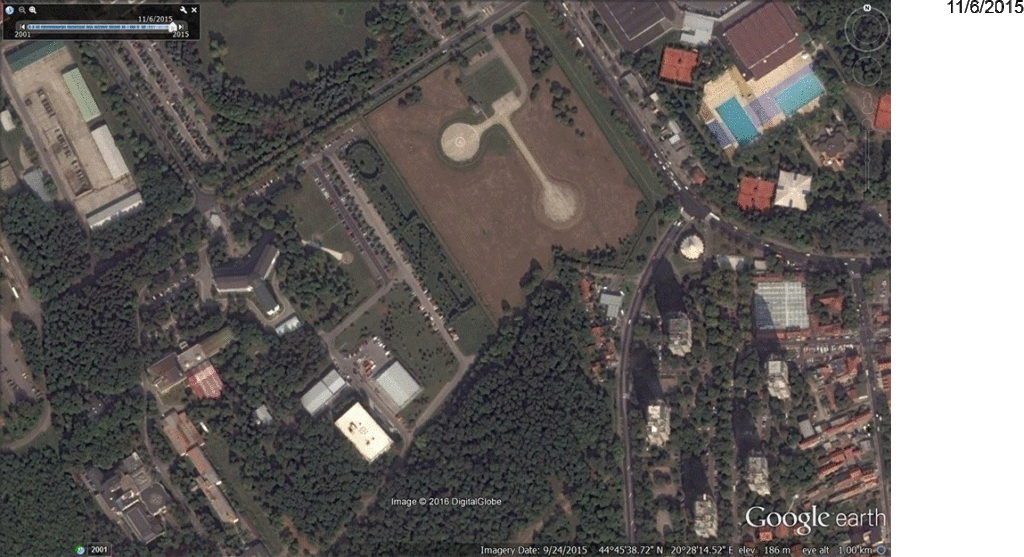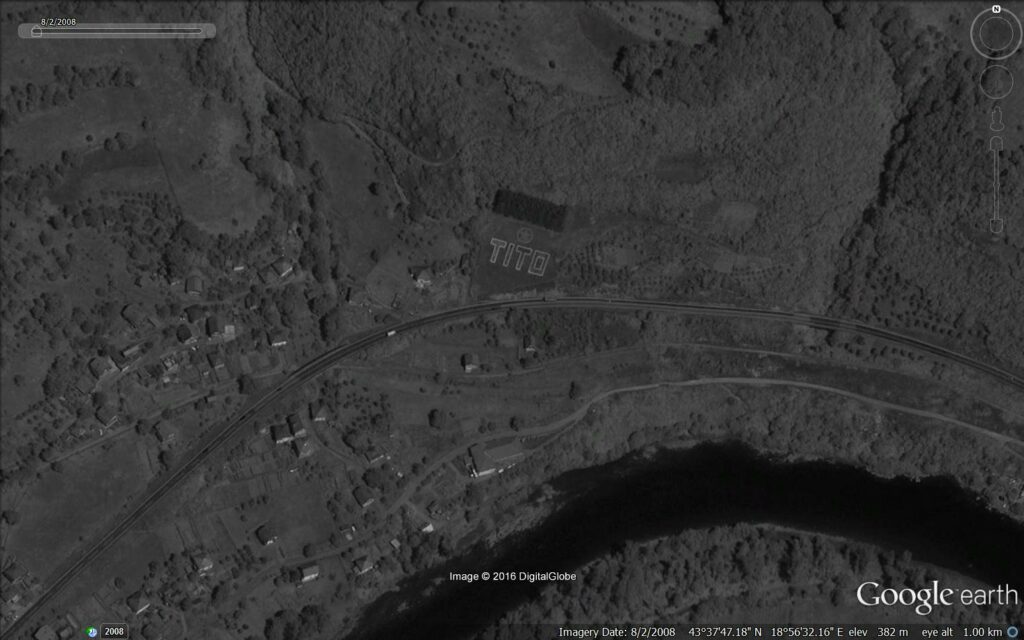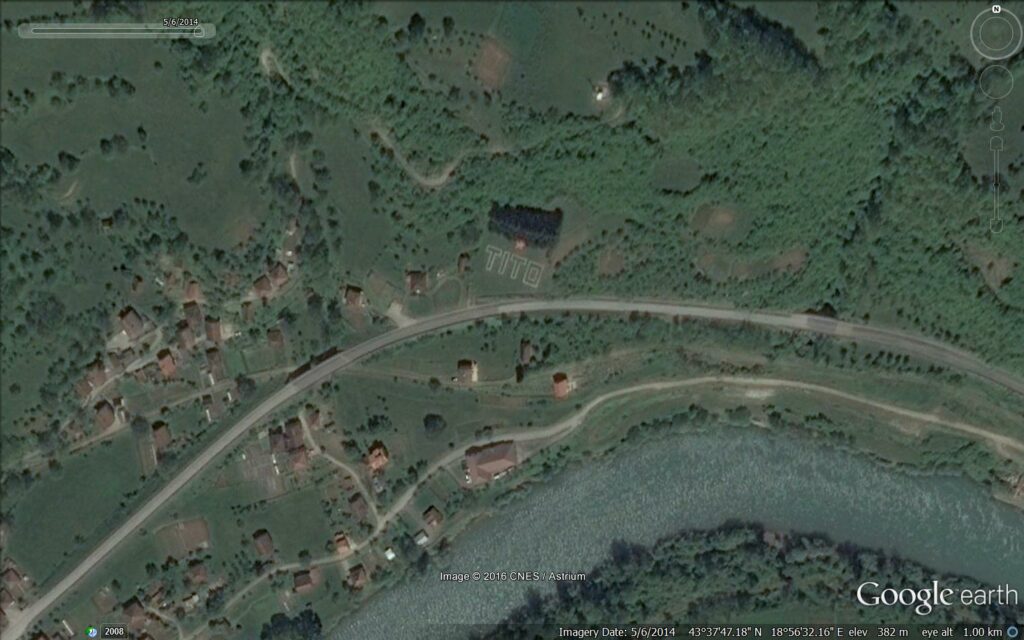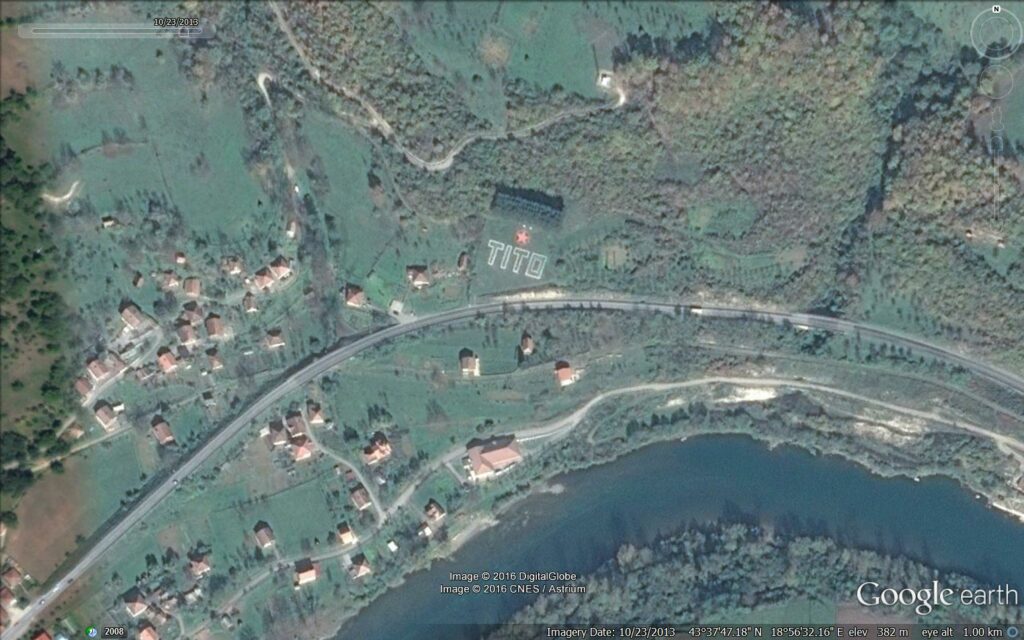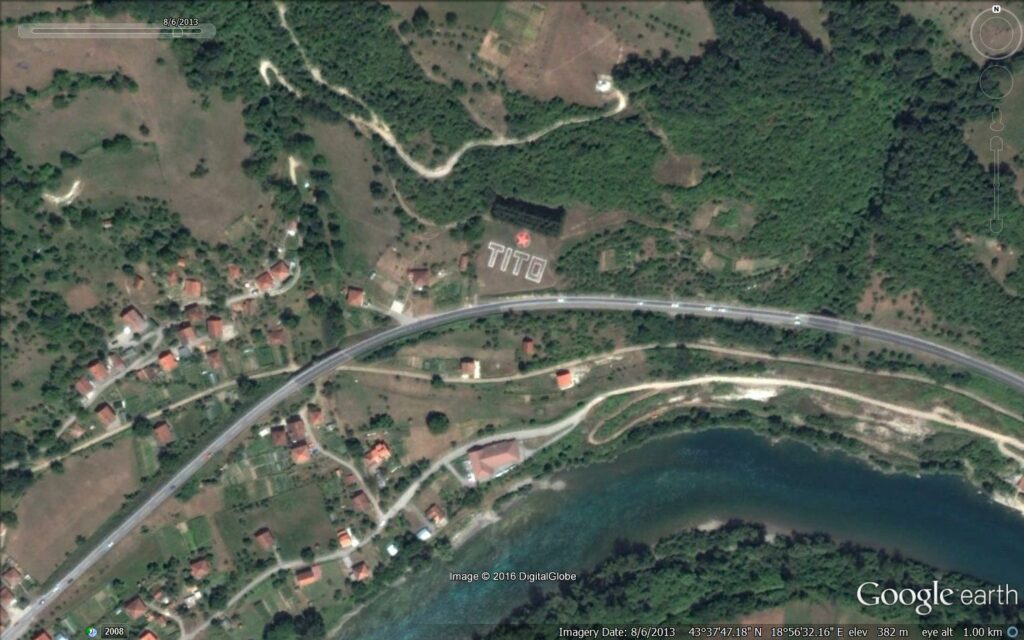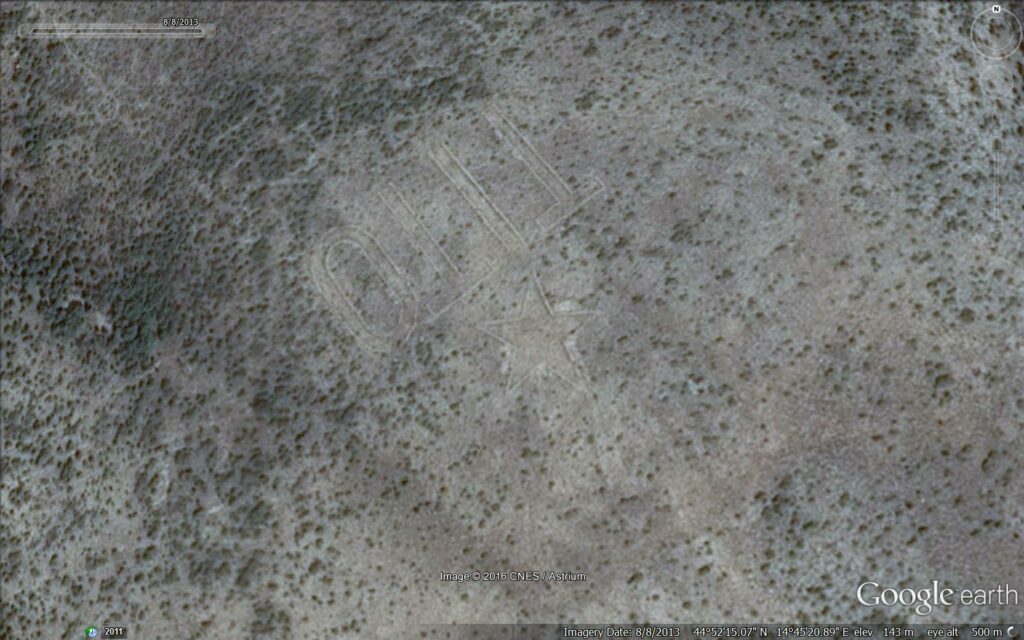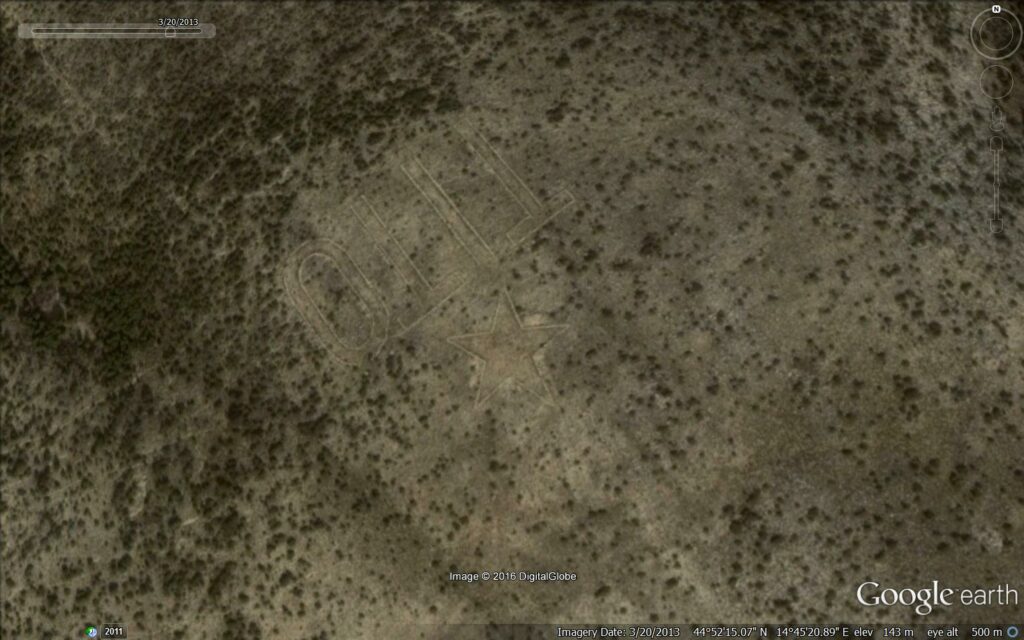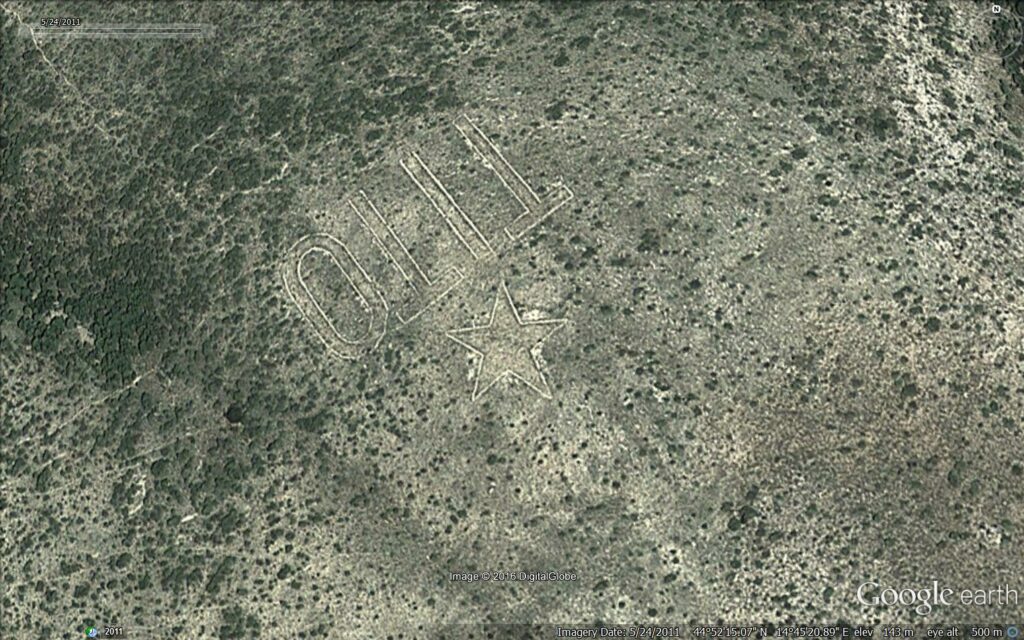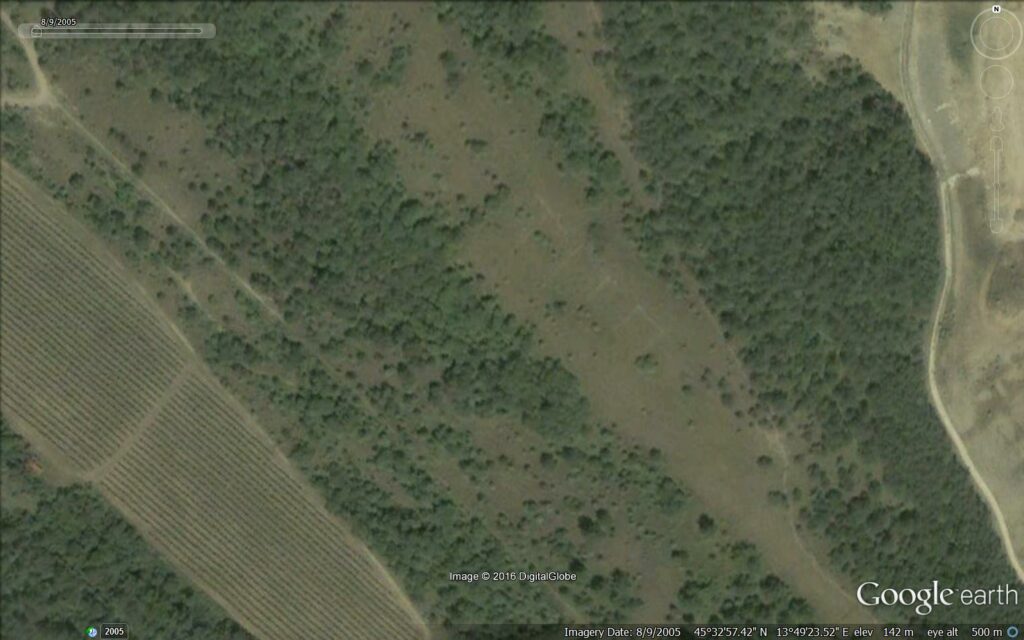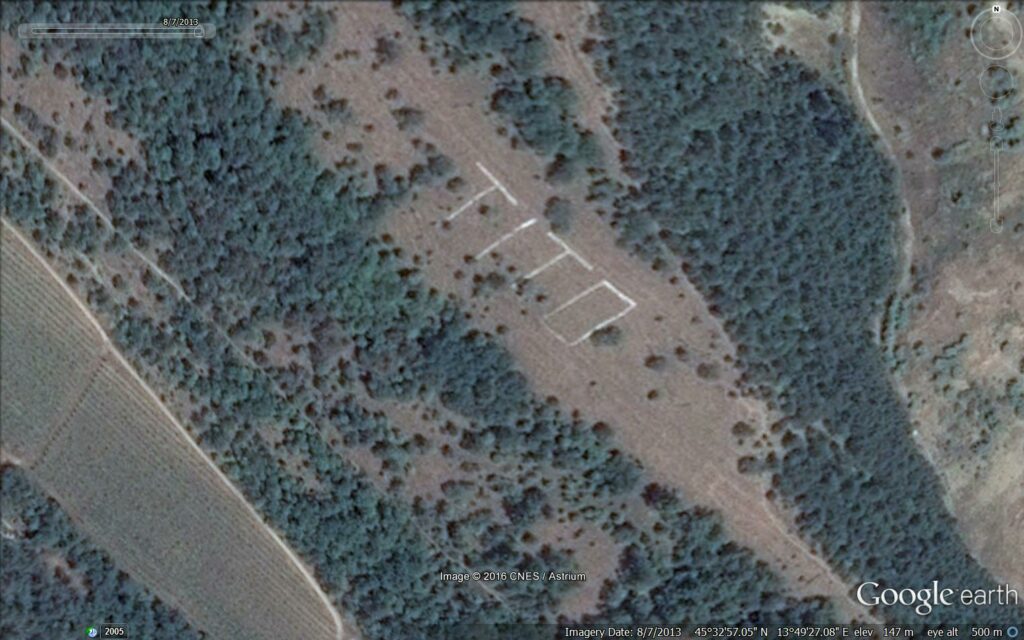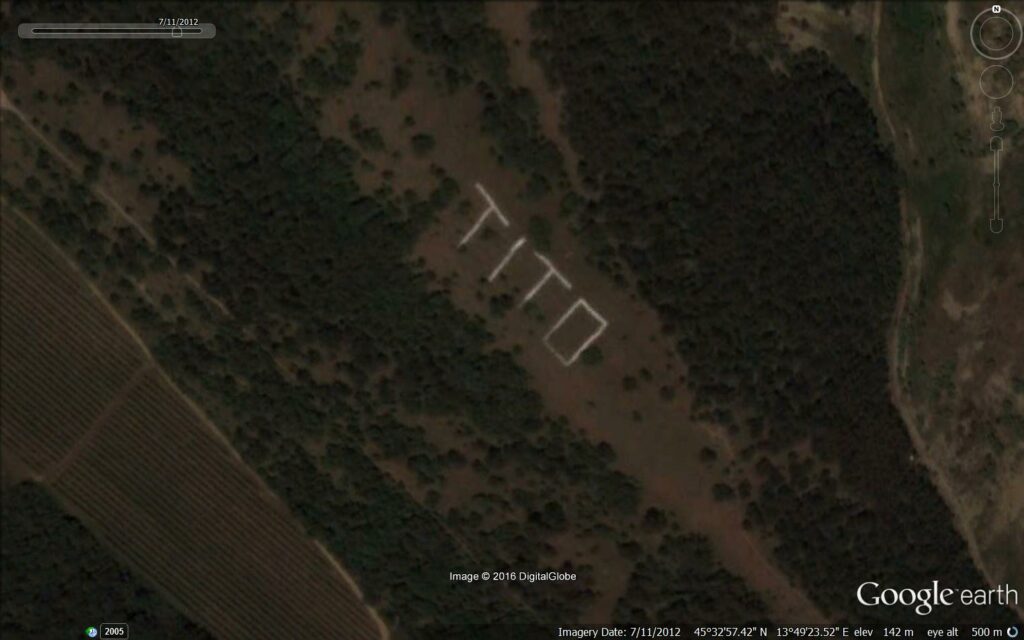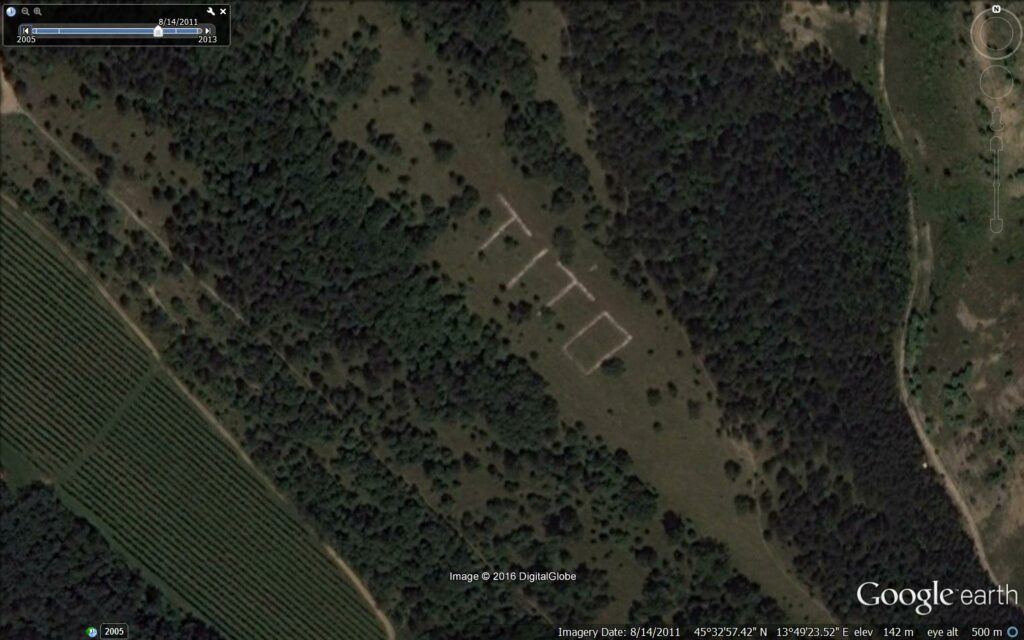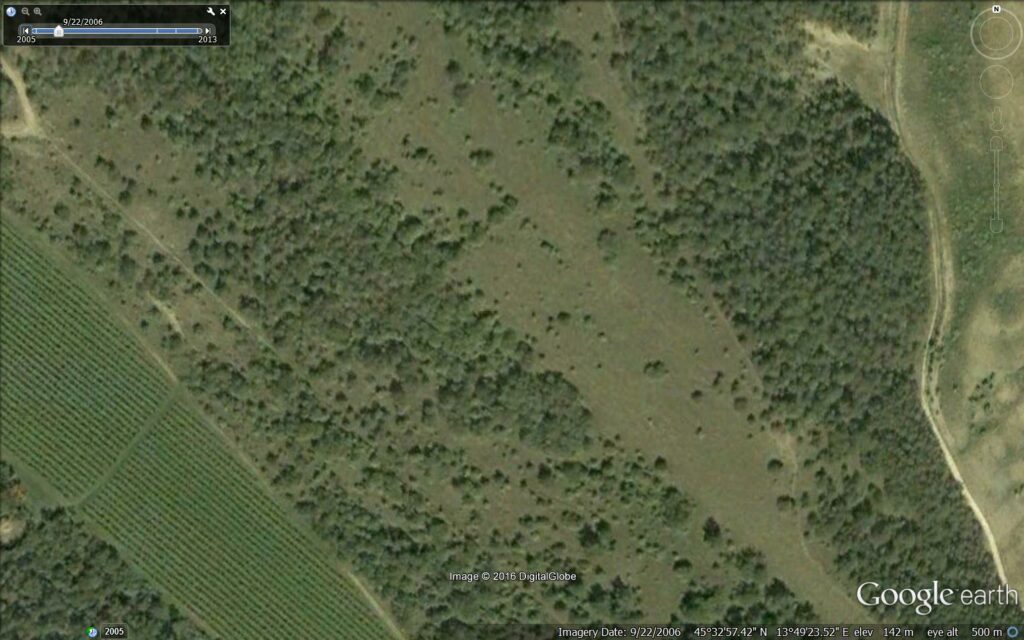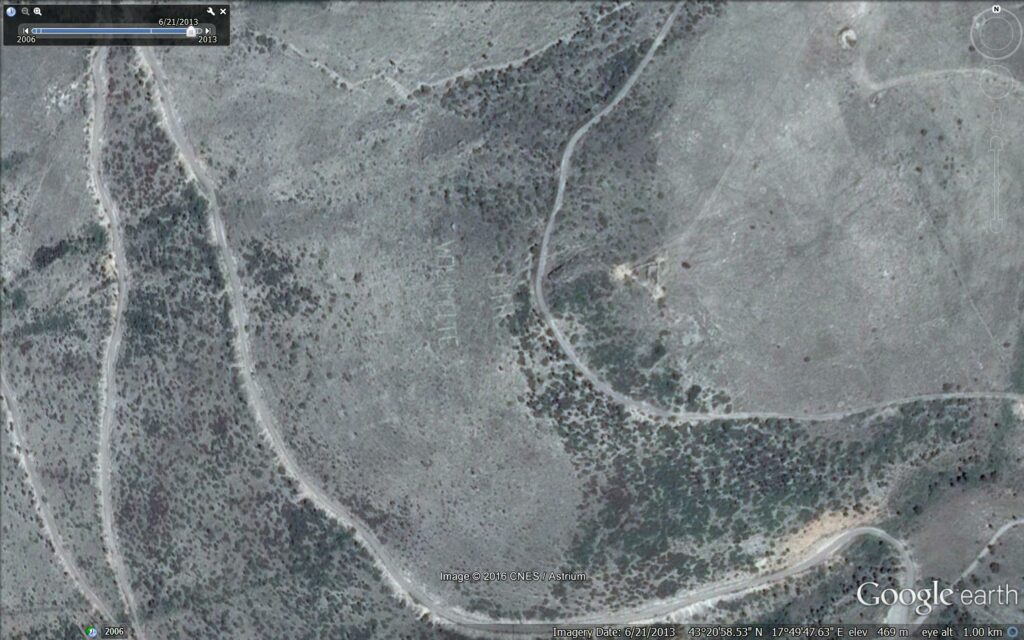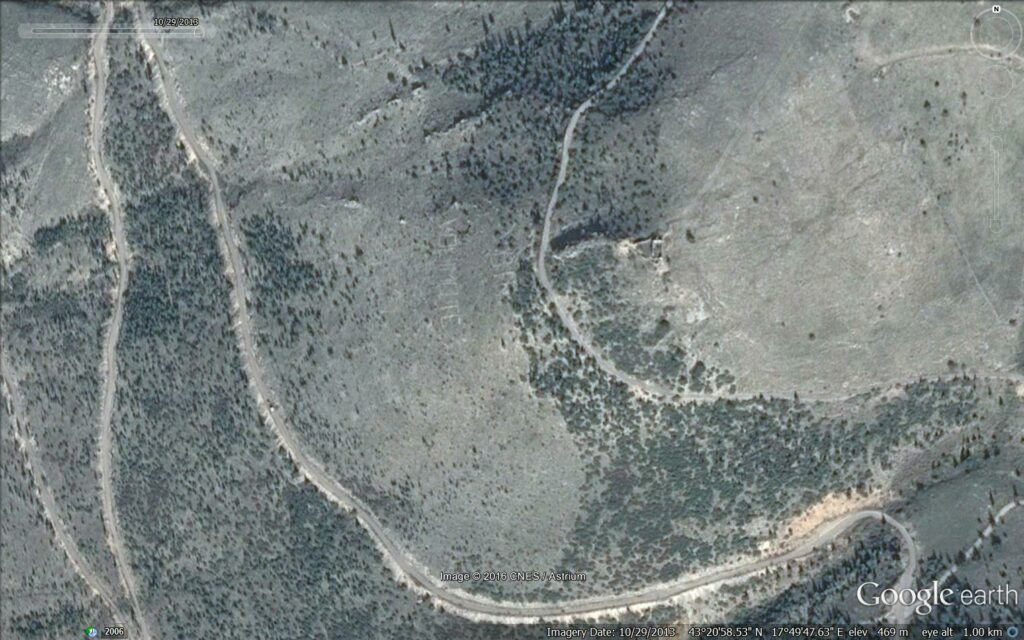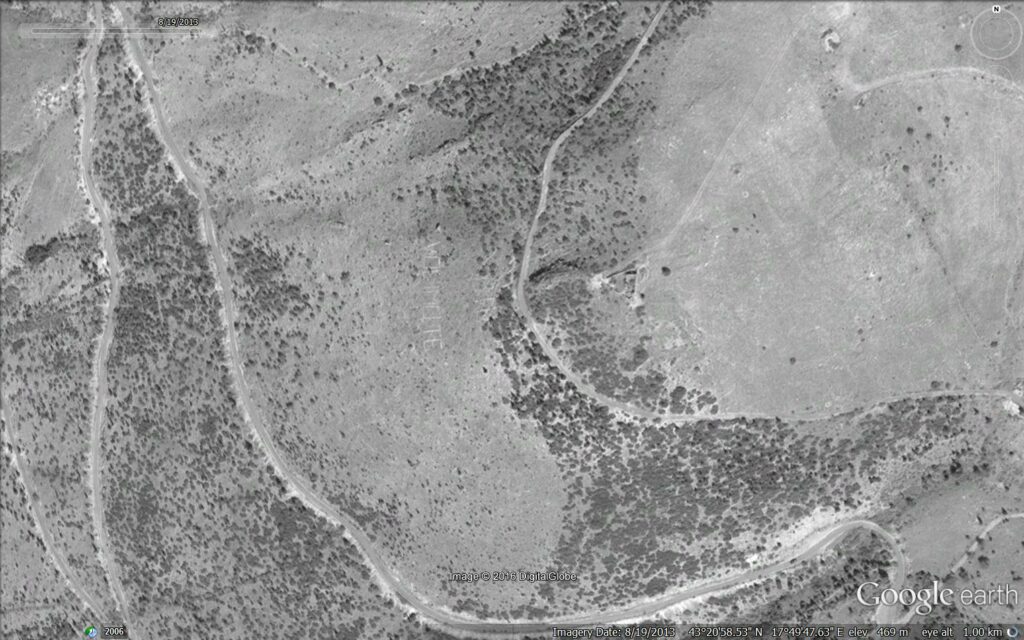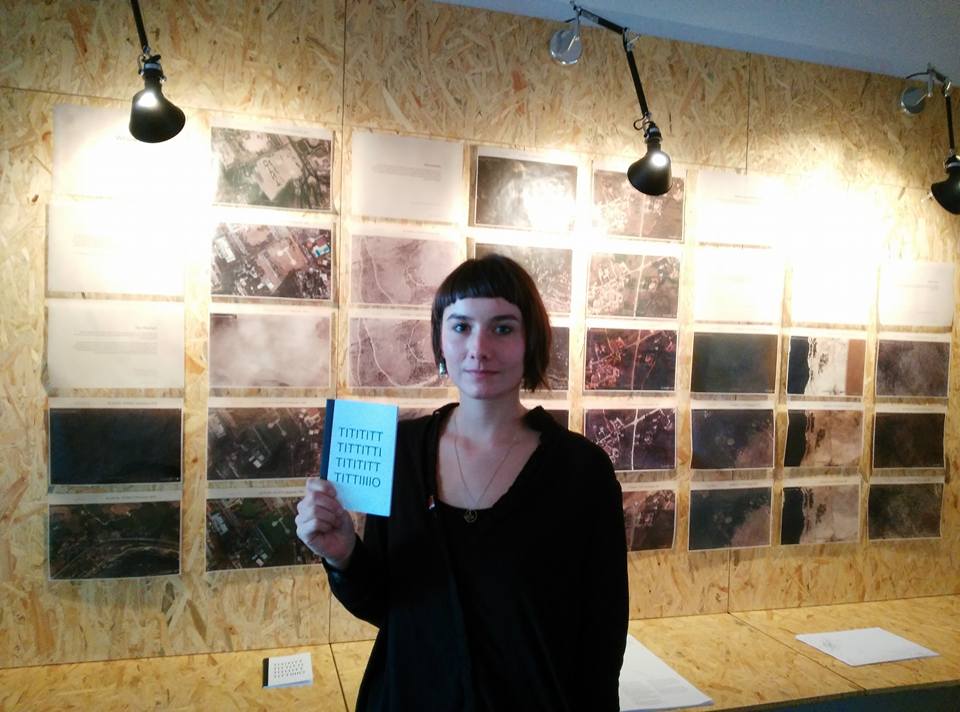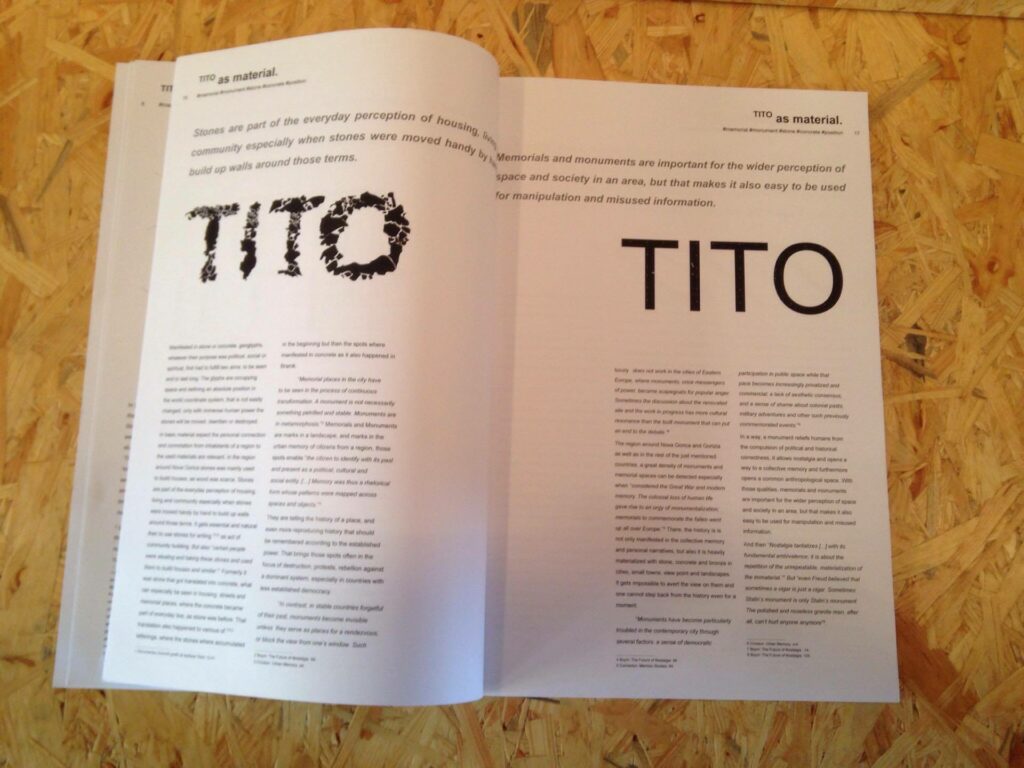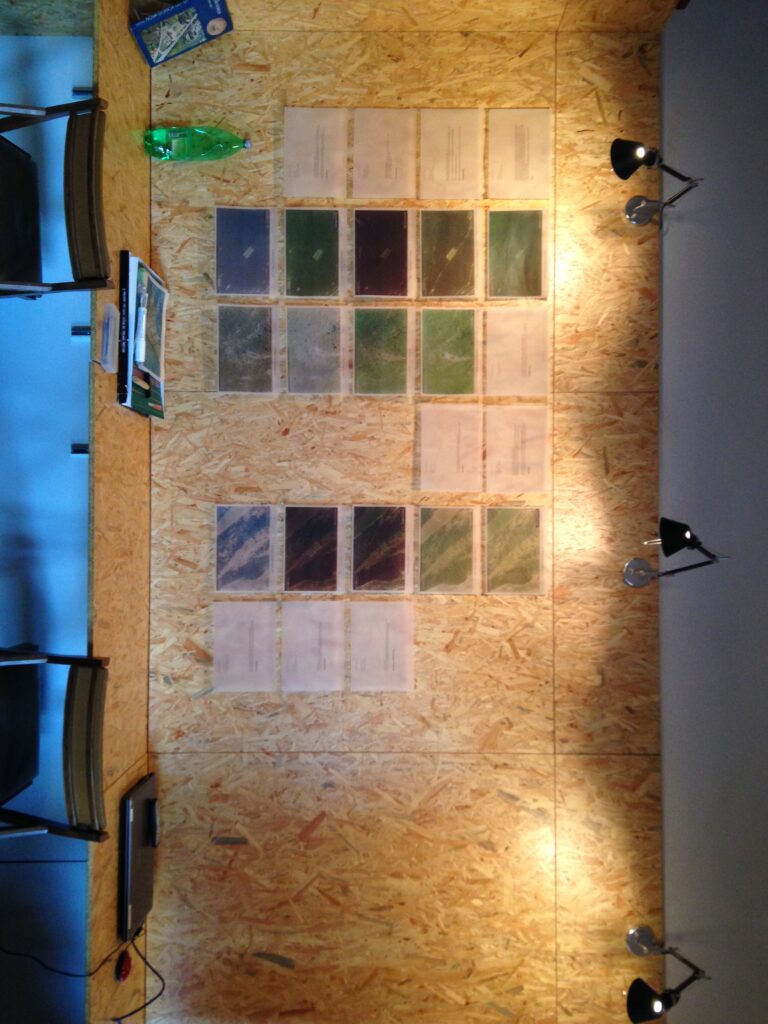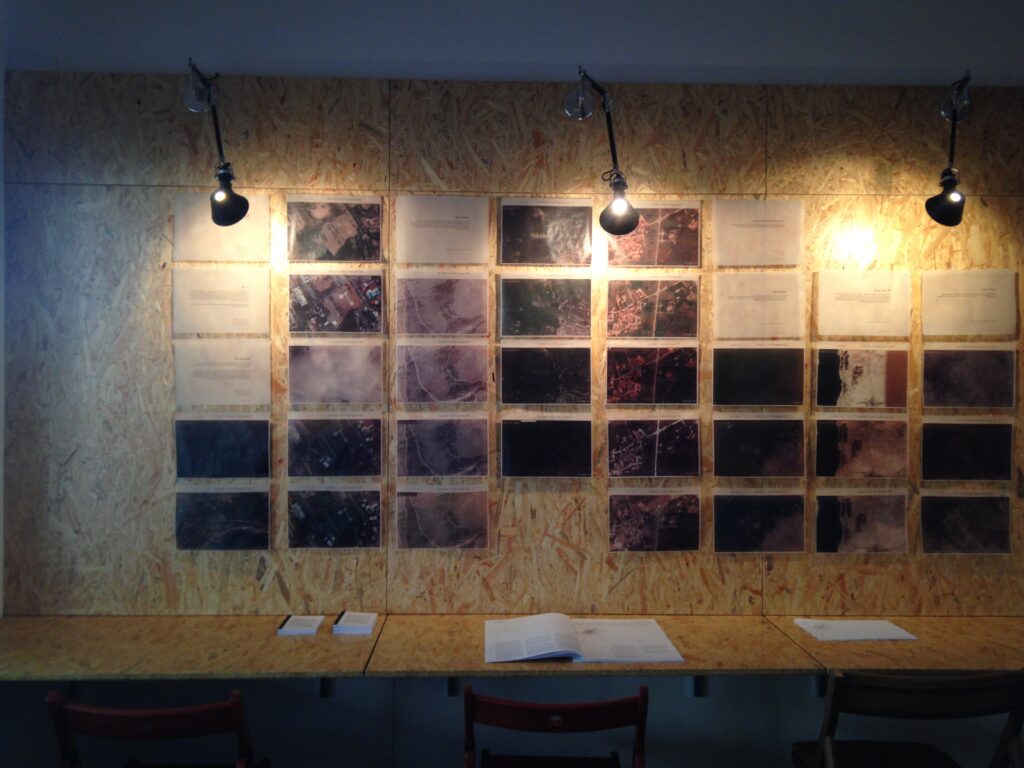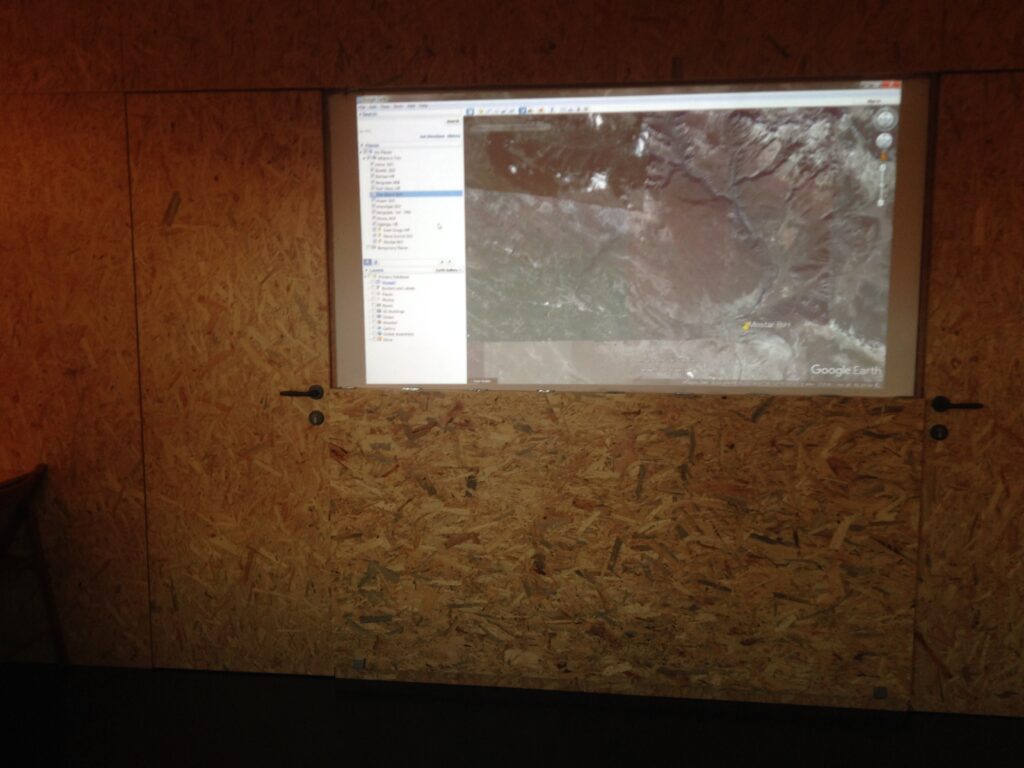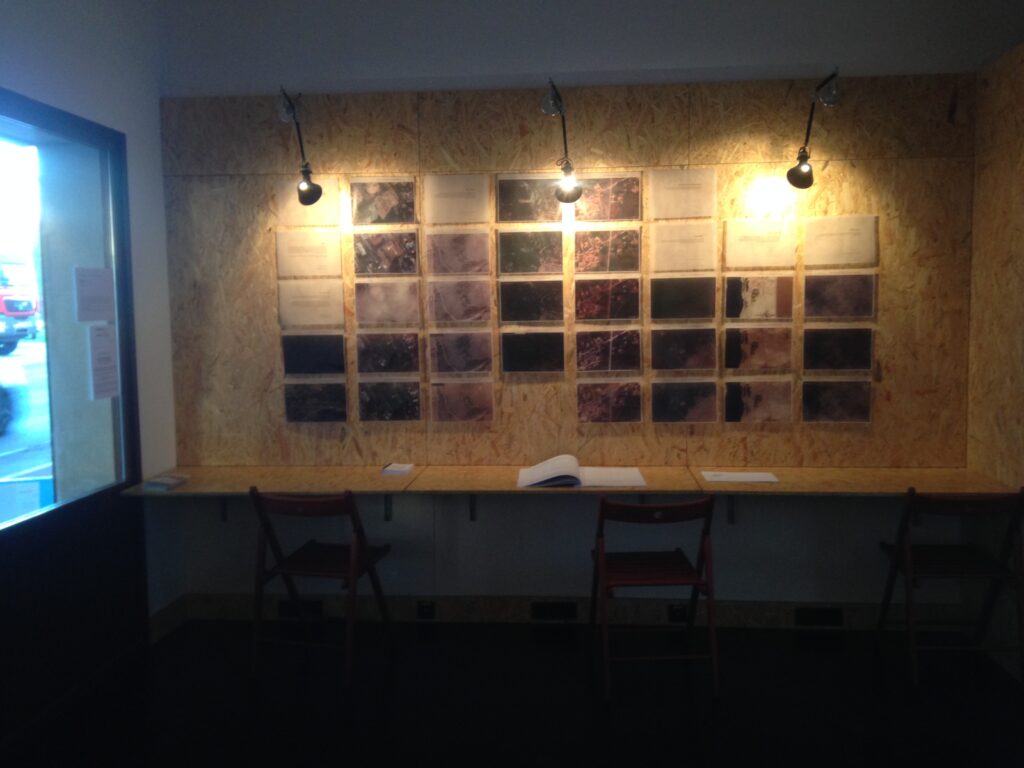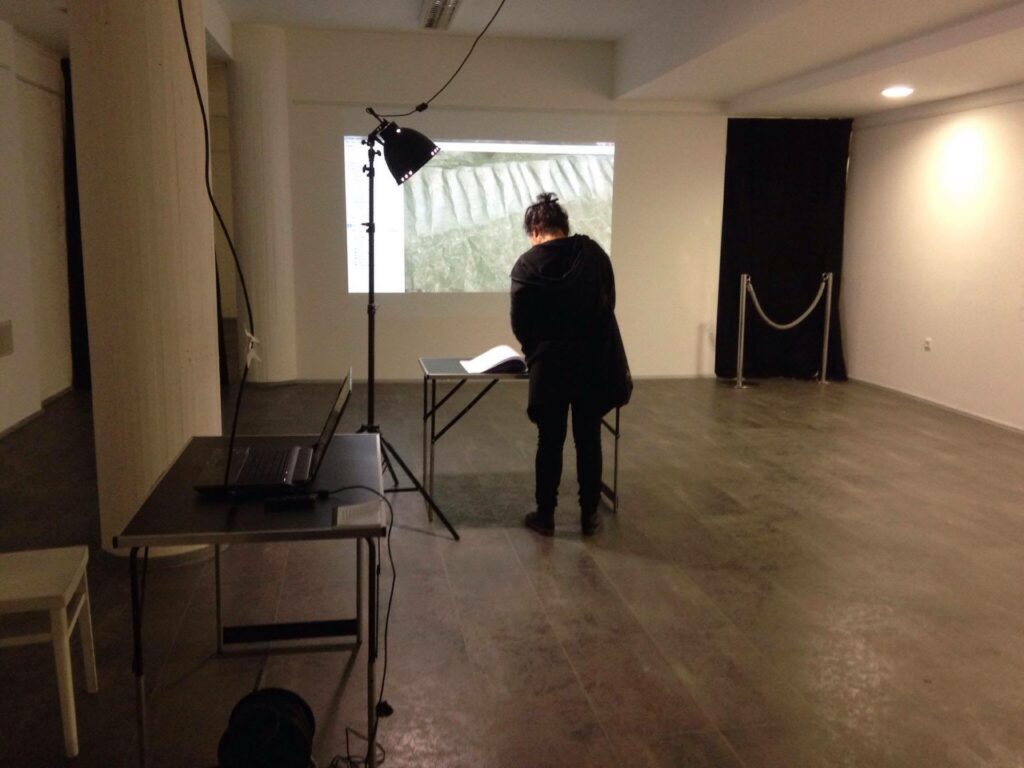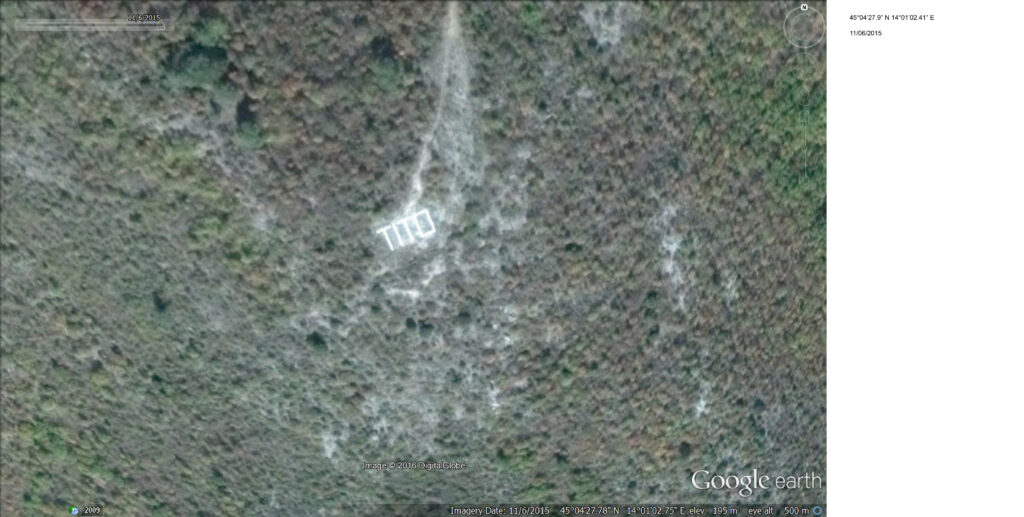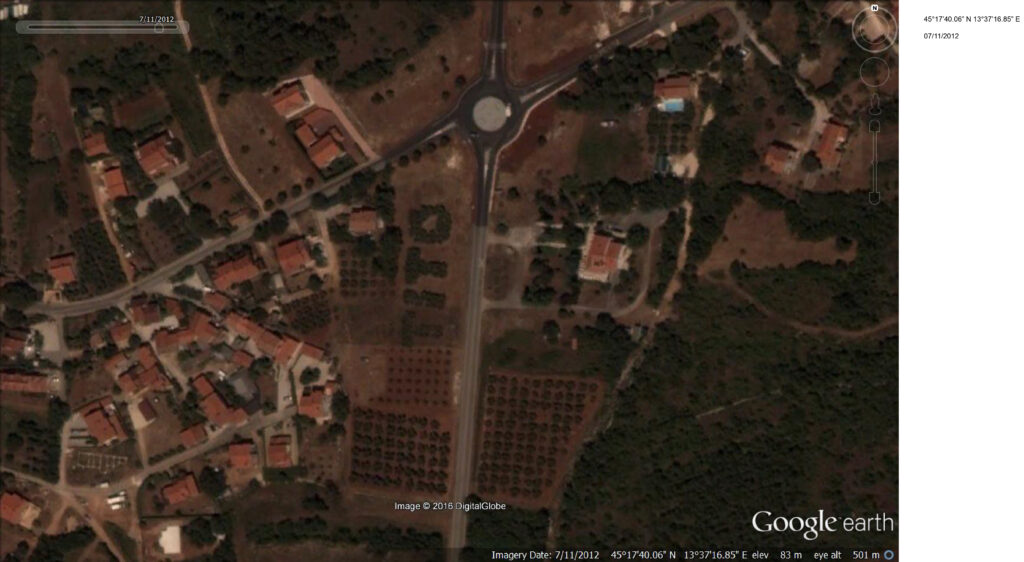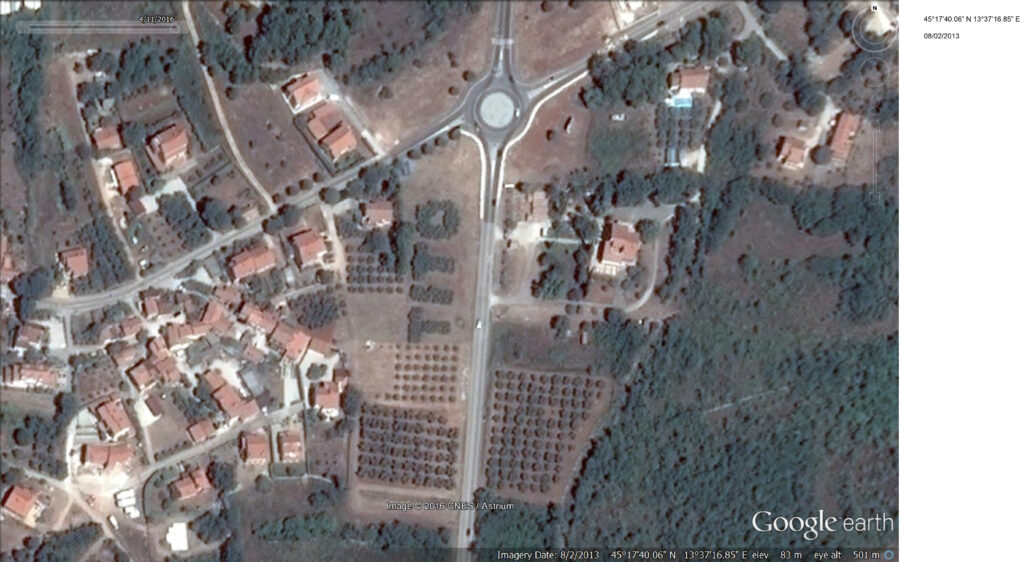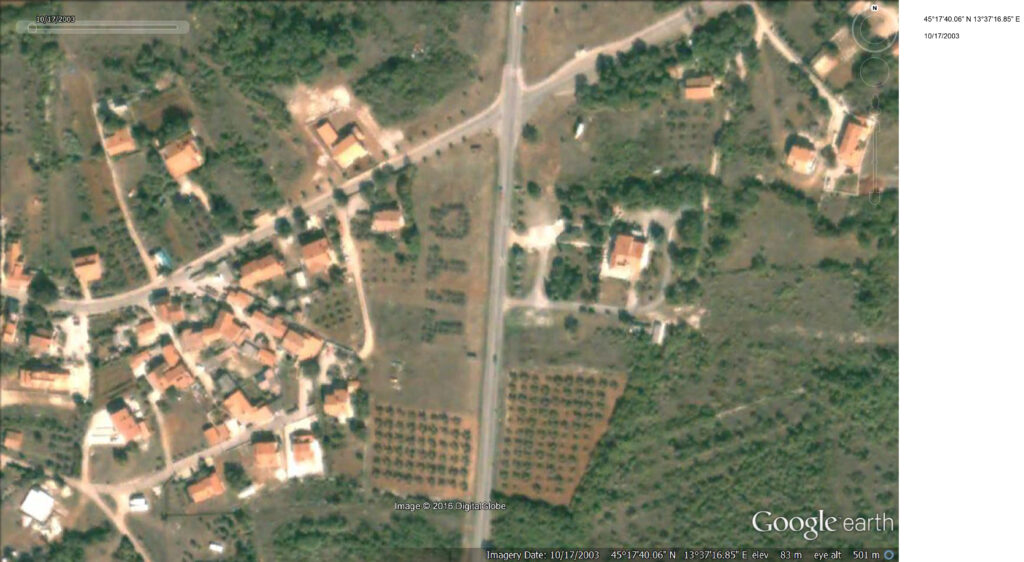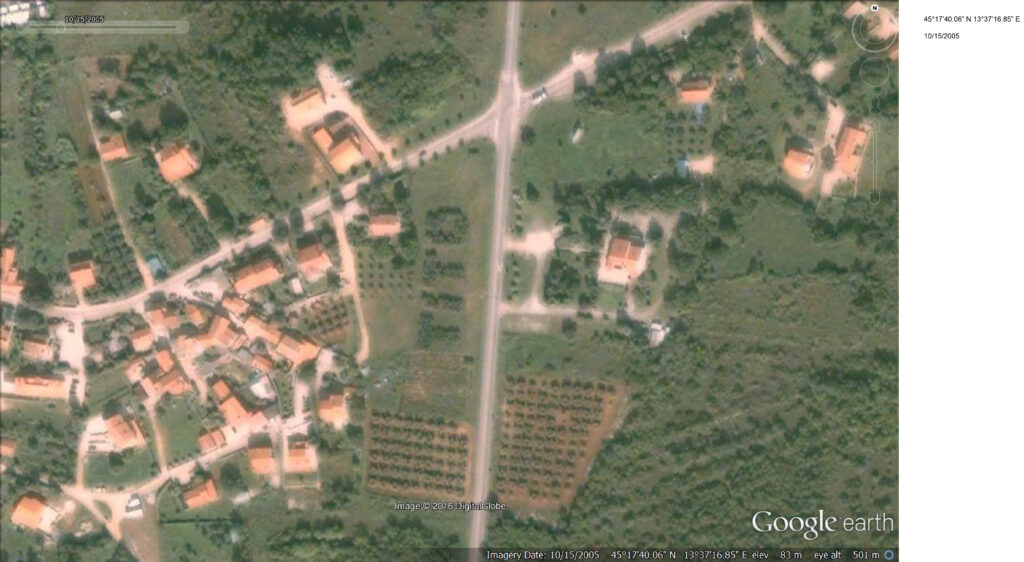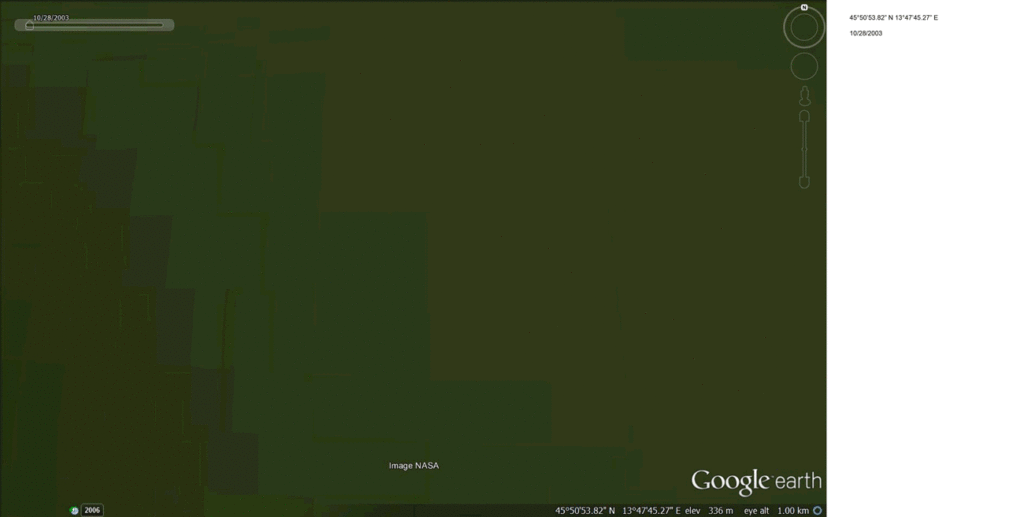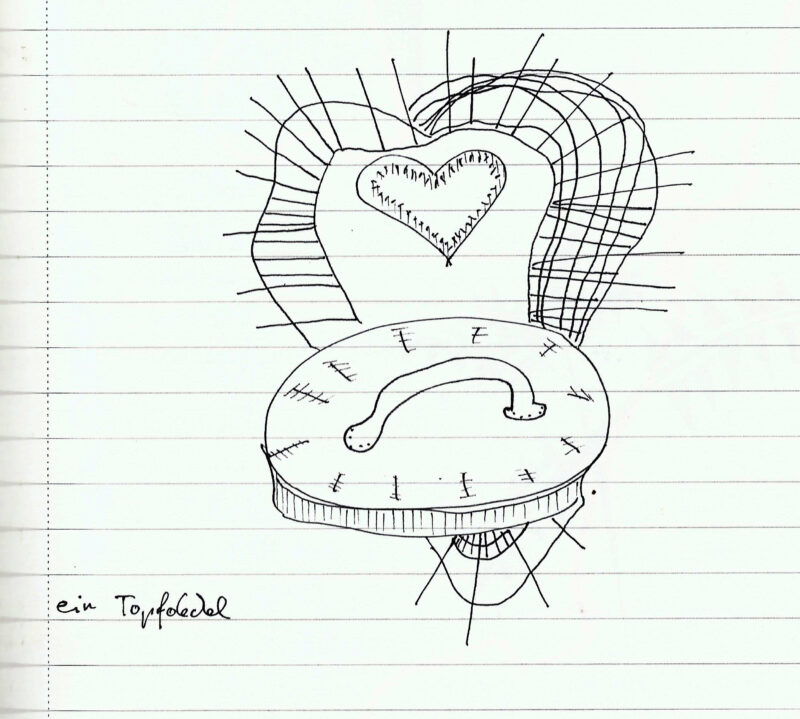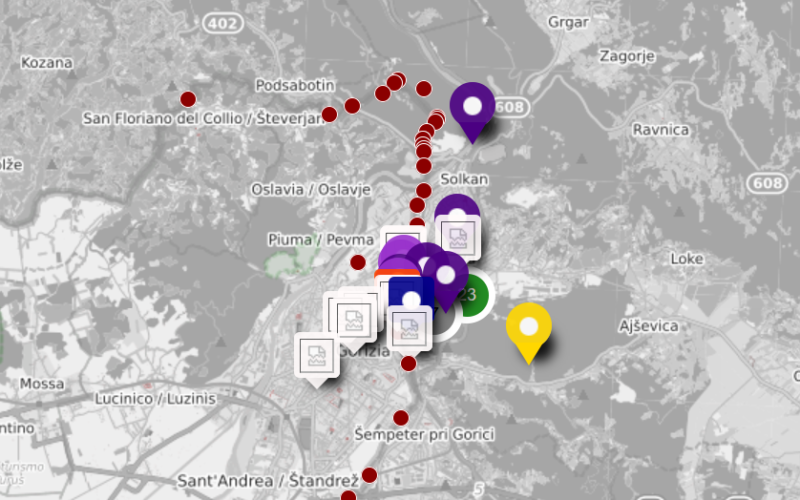In 2015/2016 I was living and studying in the twin town of Nova Gorica/Gorizia on the Slovenian/ Italian border. I remember my first weeks there, when I and the other foreign students had two main points of orientation: ‘Tito mountain’ on the Slovenian side, and the ‘triangle square’ on the Italian. After some time, we learnt that this mountain is called Sabotin and the square is Piazza Della Vittoria, when time I first got aware of the huge lettering on the mountain and its ambivalence meaning.
I got interested in it’s history, with the fact that there is a name written on a mountain that is not only referring to the name of the former Yugoslavian president Josip Broz Tito1 but also to a regime and an ideology.
1Josip Broz Tito (1892 – 1980) was a Yugoslav revolutionary and statesman, serving in various roles from 1943 until his death in 1980. During World War II he was the leader of the Partisans, often regarded as the most effective resistance movement in occupied Europe. While his presidency has been criticized as authoritarian, and concerns about the repression of political opponents have been raised, Tito was ‘seen by most as a benevolent dictator’ due to his economic and diplomatic policies. He was a popular public figure both in Yugoslavia and abroad. Viewed as a unifying symbol, his internal policies maintained the peaceful coexistence of the nations of the Yugoslav federation. wikipedia
“The commercialization of Tito is by no means an exception. Other charismatic leaders or personalities can be found in similar roles, for example, Che (on cigarette packets, vodka bottles, ice cream and bikinis), Stalin (on glasses and in the shape of a candle), Mao (on watches and tags), Gorbachev (a vodka label), and Ataturk (found practically everywhere across the symbolic landscape of the Turkish state).”2
I started to map geoglyphs3 of TITO. These letterings are inscribed at several locations across different landscapes in most of the former Yugoslavian countries. I collected actual coordinates of those memorials at beginning of 2016, to research and question their origin, background and changes within the last decades, as well as to relate them to other contemporary or historical geoglyphs.
